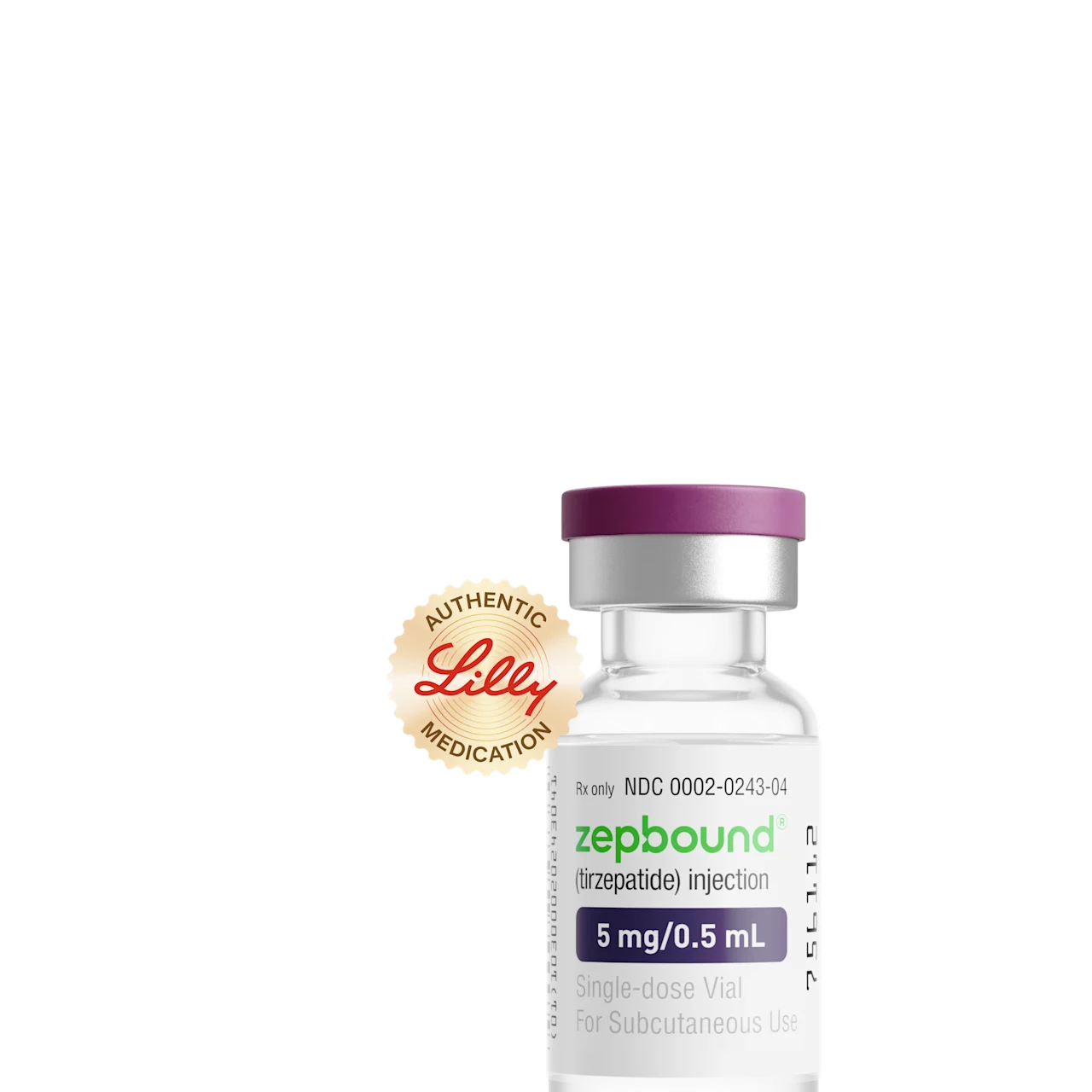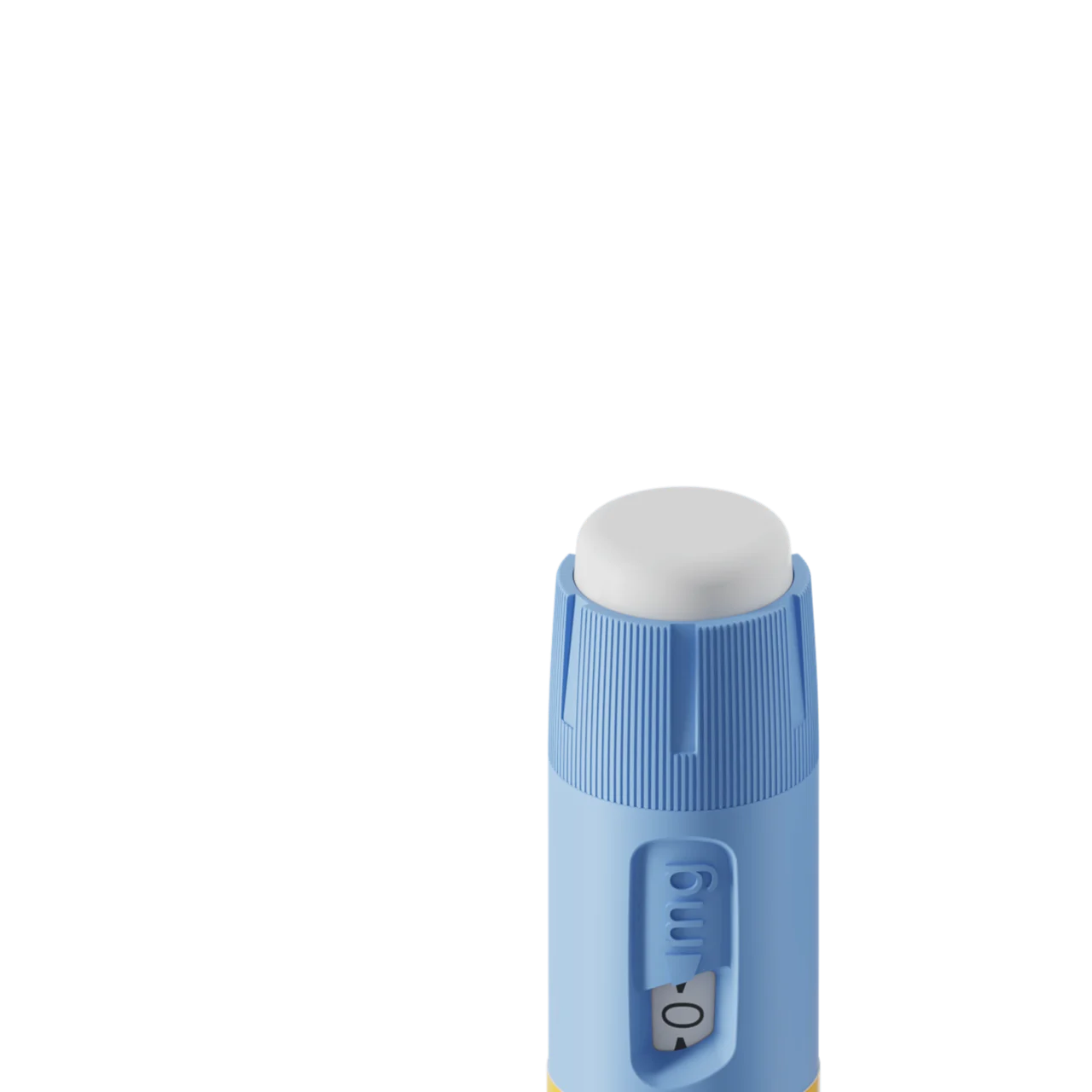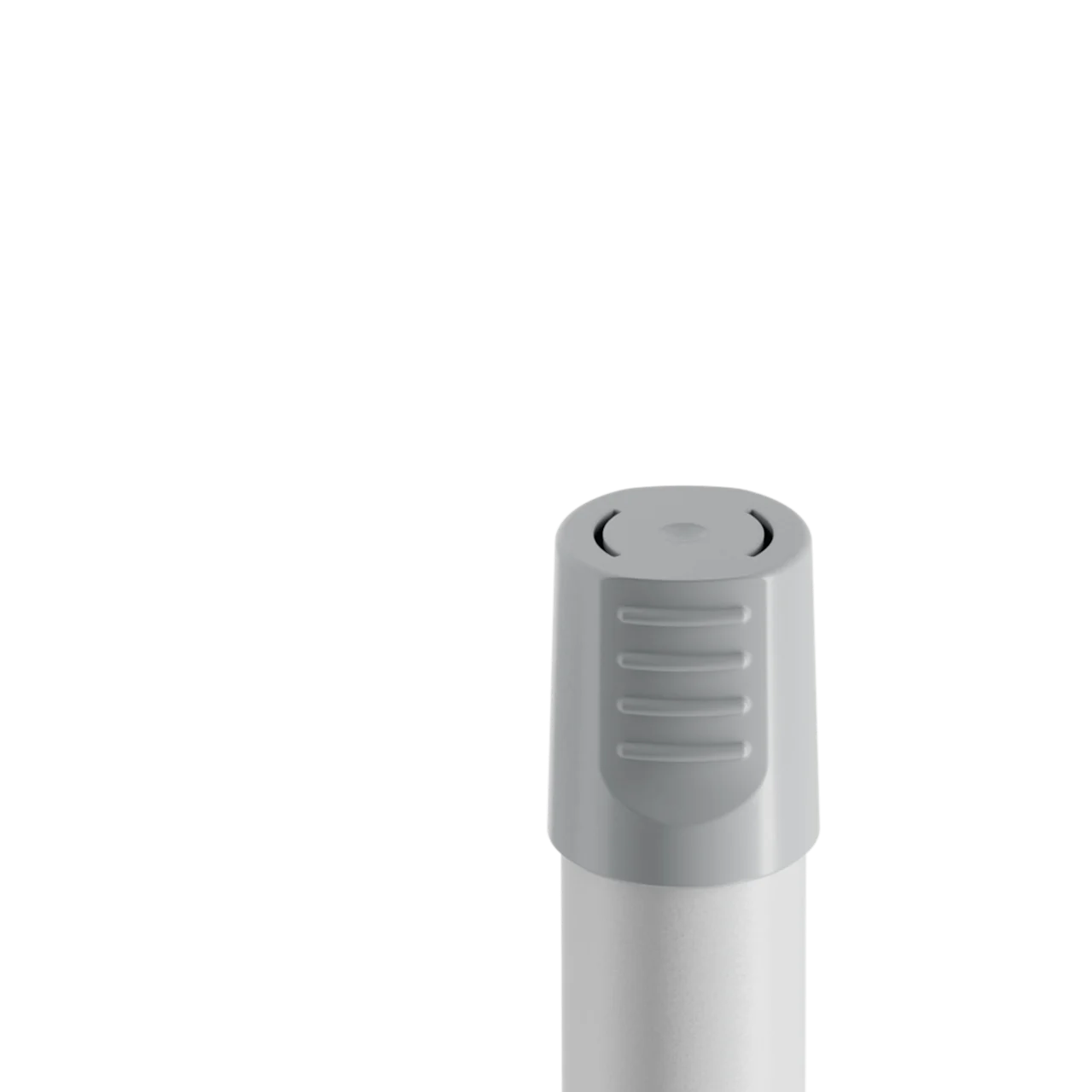Key takeaways
Currently, oral tirzepatide does not exist.
This is largely because researchers have not yet found a way to make a tirzepatide pill effective.
Tirzepatide is available in the US as a once-weekly injectable medication under the brand names Mounjaro and Zepbound.
Orforglipron, an oral GLP-1 medication in development by Eli Lilly, shows promise for weight loss and blood sugar control, though slightly less effective than injectable tirzepatide.
Here's what we'll cover
Here's what we'll cover
Here's what we'll cover
Key takeaways
Currently, oral tirzepatide does not exist.
This is largely because researchers have not yet found a way to make a tirzepatide pill effective.
Tirzepatide is available in the US as a once-weekly injectable medication under the brand names Mounjaro and Zepbound.
Orforglipron, an oral GLP-1 medication in development by Eli Lilly, shows promise for weight loss and blood sugar control, though slightly less effective than injectable tirzepatide.
You came here looking for information on oral tirzepatide, so we’ll address the elephant in the room right away. As of publication, there is no oral tirzepatide.
Currently, the only form of tirzepatide approved by the US Food and Drug Administration (FDA) is injectable, and it goes by the brand names Zepbound and Mounjaro. Eli Lilly, the company behind tirzepatide, is now developing an oral GLP-1 medicine called orforglipron.
Read on as we explain why there’s currently no tirzepatide pill and review the alternatives you can consider instead.
Is there an oral tirzepatide?
No, currently, there is no oral form of tirzepatide. Tirzepatide only exists as an injectable medication under the brand names Mounjaro and Zepbound.
That’s due to the nature of tirzepatide’s molecule, says Kathryn Horton, MD, a board-certified internal medicine physician and expert contributor at Drugwatch.com.
“Tirzepatide is a synthetic peptide that is rapidly degraded by digestive enzymes within the gastrointestinal tract,” Dr. Horton says.
When all is said is done, too little of it would remain in your system to be effective.
While researchers have found ways for other GLP-1s, such as semaglutide, to be effective in an oral form, they haven't been able to do the same for tirzepatide, at least not yet.
“Unlike oral semaglutide, tirzepatide’s larger molecular size and chemical modifications currently pose significant challenges for the development of an effective oral formulation," Dr. Horton says.
How does tirzepatide work?
Tirzepatide works by mimicking two natural hormones in your body: glucagon-like peptide-1 (GLP-1) and glucose-dependent insulinotropic polypeptide (GIP).
By activating both the GLP-1 and GIP receptors, tirzepatide:
Slows down digestion
Regulates the release of insulin and glucagon
Sends satiety (fullness) signals to your brain
Together, these effects balance blood sugar levels and reduce appetite, which can lead to weight loss in people with type 2 diabetes and obesity.
Because tirzepatide targets two hormone receptors (vs. just one like other GLP-1s), it offers more blood sugar and weight loss benefits.
Research on oral tirzepatide
Currently, there is no research on oral tirzepatide. But injectable tirzepatide has been extensively studied and is FDA-approved for weight loss, type 2 diabetes, and obstructive sleep apnea.
Weight loss:
In a phase 3 clinical trial, people with obesity taking tirzepatide lost an average of 15%–21% of their body weight over 72 weeks (about a year and five months).
In another phase 3 clinical trial, people with obesity and type 2 diabetes taking tirzepatide lost around 13%--15% of their body weight over 72 weeks.
These findings, along with additional research, have found that people taking higher dosages of tirzepatide and people without type 2 diabetes tend to lose more weight than those on lower dosages and without the condition.
Type 2 diabetes:
In a phase 3 clinical trial, tirzepatide lowered A1C levels by 2.34%–2.40%, making it significantly more effective at lowering blood sugar levels than semaglutide and other GLP-1s.
Sleep apnea:
In two 52-week trials, people with moderate to severe sleep apnea and obesity were treated with tirzepatide or placebo. Tirzepatide reduced the number of breathing interruptions by about 25–29 events per hour, compared with about 5 per hour with placebo.
Participants on tirzepatide also had greater weight loss and improvements in oxygen levels, blood pressure, and sleep quality.
How is orforglipron different than oral tirzepatide?
Orforglipron is an oral, once-daily GLP-1 for weight loss that’s being developed by Eli Lilly, while oral tirzepatide doesn’t exist. Injectable tirzepatide, however, does exist; it's a dual GLP-1/GIP receptor agonist for weight loss and diabetes that’s also manufactured by Eli Lilly.
Here’s how injectable tirzepatide and orforglipron compare when it comes to type 2 diabetes and weight loss.
Type 2 diabetes:
Orforglipron: In a clinical trial of people with type 2 diabetes, orforglipron reduced A1C levels by 1.3%–1.6% after 40 weeks. By the end of the trial, a majority of participants had achieved an A1C at or below 6.5% — the threshold for diabetes.
Tirzepatide: In a clinical trial, tirzepatide reduced A1C levels by nearly double (2.34–2.4%) in the same time frame of 40 weeks, in people who were also using insulin.
Weight loss:
Orforglipron: In a clinical trial of individuals with type 2 diabetes, orforglipron caused an average weight loss of 4.7%–7.9% in 40 weeks. In a clinical trial of individuals with obesity (but without diabetes), the average weight loss was 8.6%–12.6% in six months.
Tirzepatide: In a clinical trial of people with type 2 diabetes, tirzepatide caused an average weight loss of 13%--15% in 72 weeks. In a clinical trial of people with obesity, tirzepatide caused an average weight loss of 15%–21% in 72 weeks.
While impressive, these results still show that orforglipron is slightly less effective than injectable tirzepatide for weight loss and blood sugar control.
That’s because while both drugs target GLP-1 receptors, tirzepatide also works on the GIP receptor, Dr. Horton says. “Current studies suggest the dual action of tirzepatide on both GLP-1 and GIP receptors achieves superior blood sugar control and greater weight loss compared to GLP-1 only agonists.”
Orforglipron’s smaller molecular size makes it more suitable for an oral form, Dr. Horton adds. But it’s also what holds it back in effectiveness, especially compared to tirzepatide.
The clinical data for orforglipron is promising, and Eli Lilly plans to submit it for FDA approval as a weight loss treatment in 2025 (and for type 2 diabetes in 2026). That means we may see orforglipron available sometime in 2026 or later.
| Orforglipron | Tirzepatide (Zepbound, Mounjaro) |
Administration | Once-daily pill | Weekly injection |
Type of medication | GLP-1 | Dual-action GLP-1/GIP |
FDA approval | None (expected in 2026) | Zepbound: Weight loss in adults with obesity or overweight, with diet and exercise Obstructive sleep apnea in adults with obesity
Mounjaro: Control blood sugar levels in adults with type 2 diabetes
|
Efficacy | Reduced A1C levels by 1.3%–1.6% in 10 months Average weight loss of 4.7%–12.6% in 6–10 months | Reduced A1C levels by 2.3%–2.4% in 10 months Average weight loss of 13%–21% in 72 weeks |
Side effects | Nausea, vomiting, constipation, diarrhea, COVID-19, belching, headache, fatigue, heartburn, upset stomach, dizziness, abdominal pain, decreased appetite, urinary tract infection | Nausea, diarrhea, COVID-19, constipation, upset stomach, vomiting, decreased appetite, headache, abdominal pain, hair loss, dizziness, belching, injection site reactions |
Potential oral tirzepatide alternatives
While oral tirzepatide doesn’t yet exist, there are various alternatives you can take to treat type 2 diabetes and/or lose weight. In many cases, the tirzepatide alternatives listed below are effective at both.
Metformin
Metformin is a daily or twice-daily oral medication for type 2 diabetes that’s sometimes prescribed off-label for polycystic ovary syndrome (PCOS).
Metformin works by decreasing glucose production and enhancing insulin sensitivity, which helps to lower insulin levels and blood sugar. Metformin also reduces appetite, which leads to a modest amount of weight loss: about 8 pounds in seven months.
Oral semaglutide (Rybelsus)
Currently, Rybelsus is the only oral GLP-1 medication available today. It contains the same active ingredient (semaglutide) as the injectable medications Ozempic and Wegovy.
Rybelsus is FDA-approved for type 2 diabetes and for reducing the risk of serious cardiovascular problems in people with type 2 diabetes. But studies show it can also cause a small amount of weight loss.
Over the course of a year and a half, Rybelsus lowers A1C levels by 0.9% and causes an average weight loss of 7.5 pounds. Some people taking Rybelsus experience even more weight loss on Rybelsus, with about one in three people losing at least 5% of their body weight.
Oral semaglutide (Wegovy)
The manufacturer behind Rybelsus, Wegovy, and Ozempic, Novo Nordisk, recently submitted another oral form of semaglutide for FDA approval. This form of oral semaglutide is the long-awaited Wegovy pill, and is expected to be approved in late 2025 for weight loss.
Like Rybelsus, the Wegovy pill would be taken daily. In clinical trials, oral Wegovy produced an average weight loss of 13.6% over 64 weeks (about a year and three months).
Injectable tirzepatide (Zepbound, Mounjaro)
Injectable tirzepatide is available as Mounjaro and Zepbound. Both versions come in the same dosage strengths, have the same side effects, and are injected once a week.
There is no difference between Mounjaro vs. Zepbound other than what they’re FDA-approved to treat:
Zepbound is approved for weight loss and obstructive sleep apnea. In clinical trials, Zepbound produced weight loss results of 15%–21% in 72 weeks (about a year and five months).
Mounjaro is approved for type 2 diabetes. In clinical trials, injectable tirzepatide lowered A1C levels by over 2.3%.
Injectable semaglutide (Wegovy, Ozempic)
Injectable semaglutide is available as Ozempic and Wegovy. Both are weekly injections that cause similar side effects. But they have different dosage strengths and are FDA-approved for different conditions.
Wegovy is approved for weight loss, fatty liver disease, and cardiovascular risk reduction in people with obesity or overweight. In clinical trials, people taking Wegovy lost 6% of their body weight in three months, and nearly 11% in six months.
Ozempic is approved for type 2 diabetes and kidney decline and cardiovascular risk reduction in people with type 2 diabetes. In clinical trials of people with type 2 diabetes, Ozempic reduced A1C levels by 1.9%–2.2% and caused an average weight loss of 13–15 pounds over 10 months.
Unlike tirzepatide, Ozempic and Wegovy are GLP-1 agonists, which means they target only one receptor.
Injectable liraglutide (Saxenda, Victoza)
Unlike the other injectable GLP-1s on this list, liraglutide must be injected once a day. It follows a dosage titration schedule, where you start at a low dosage and ramp up over a period of weeks to your maintenance dose.
Injectable liraglutide is FDA-approved for different conditions under different brand names with different dosage strengths:
Saxenda is approved for weight management. In clinical studies, people taking Saxenda have lost 9.2% of their body weight in four months.
Victoza is approved for type 2 diabetes (as is the generic version, liraglutide). In clinical trials of people with type 2 diabetes, it reduced A1C levels by 1.23% within 20–52 weeks.
Rx weight loss with Ro
Get access to prescription weight loss medication online
Bottom line
For now, oral tirzepatide is not a, err, thing, and tirzepatide is only available as a weekly injection. Here’s what to keep in mind:
A tirzepatide pill is difficult to produce because of its molecular structure. Essentially, it breaks down too easily in the digestive system to be effective.
Only injectable tirzepatide is available in the US. It can be prescribed as a treatment for type 2 diabetes (Mounjaro) and for weight loss or sleep apnea (Zepbound).
Early research suggests an oral GLP-1, orforglipron, could deliver similar blood sugar and weight loss benefits to tirzepatide. But it is still being studied and has yet to be approved.
Other oral tirzepatide alternatives include pills like metformin and Rybelsus. Oral semaglutide (“Wegovy pill”) may also be an option in the near future, as long as it receives FDA approval.
For now, injectable GLP-1s and dual agonists like tirzepatide offer the greatest weight loss and blood sugar improvements.
Frequently asked questions (FAQs)
Does tirzepatide come in pill form?
No, there is no tirzepatide pill. Tirzepatide only comes in an injectable form under the brand names Mounjaro and Zepbound. You may see online ads for compounded drops, pills, or other oral versions of “tirzepatide.” However, the FDA warns that these products may be counterfeit or even harmful.
How effective is oral tirzepatide?
And does oral tirzepatide work? Well, it’s hard to say since there aren’t any clinical trials or research on the effectiveness of oral tirzepatide for type 2 diabetes or weight loss.
Is oral tirzepatide FDA-approved?
No, oral tirzepatide is not FDA-approved because there are no clinical trials or research on the effectiveness of oral tirzepatide. Only injectable tirzepatide (Mounjaro, Zepbound) is FDA-approved for type 2 diabetes and weight loss. Eli Lilly, the maker of tirzepatide, is developing a new oral GLP-1 drug called orforglipron that may be approved soon and could be available as early as April 2026.
Is oral tirzepatide as good as injected?
It’s hard to know whether oral tirzepatide is as good as injected, since there isn’t any solid research on oral tirzepatide and its possible therapeutic benefits. However, injectable tirzepatide has been shown to reduce A1C blood sugar levels by over 2% in people with type 2 diabetes, and to lower body weight by 15%–21% in 72 weeks.
DISCLAIMER
If you have any medical questions or concerns, please talk to your healthcare provider. The articles on Health Guide are underpinned by peer-reviewed research and information drawn from medical societies and governmental agencies. However, they are not a substitute for professional medical advice, diagnosis, or treatment.
Zepbound Important Safety Information: Read more about serious warnings and safety info.
Mounjaro Important Safety Information: Read more about serious warnings and safety info.
GLP-1 Important Safety Information: Read more about serious warnings and safety info.
Ozempic Important Safety Information: Read more about serious warnings and safety info.
Wegovy Important Safety Information: Read more about serious warnings and safety info.
Saxenda Important Safety Information: Read more about serious warnings and safety info.
References
Aronne, L. J., Horn, D. B., le Roux, C. W., et al. (2025). Tirzepatide as Compared with Semaglutide for the Treatment of Obesity. The New England Journal of Medicine, 393(1), 26–36. doi: 10.1056/NEJMoa2416394. Retrieved from https://pubmed.ncbi.nlm.nih.gov/40353578/
Bonora, B. M., Russo, G., Leonetti, F., et al. (2024). Effectiveness of oral semaglutide on glucose control and body weight up to 18 months: a multicenter retrospective real-world study. Journal of Endocrinological Investigation, 47(6), 1395–1403. doi: 10.1007/s40618-024-02309-2. Retrieved from https://pmc.ncbi.nlm.nih.gov/articles/PMC11142994/
Cerillo, J. L. & Parmar, M. (2024). Liraglutide. StatPearls. Retrieved from https://www.ncbi.nlm.nih.gov/books/NBK608007/
Corcoran, C. & Jacobs, T. F. (2023). Metformin. StatPearls. Retrieved from https://www.ncbi.nlm.nih.gov/books/NBK518983/
Dahl, D., Onishi, Y., Norwood, P., et al. (2022). Effect of Subcutaneous Tirzepatide vs Placebo Added to Titrated Insulin Glargine on Glycemic Control in Patients With Type 2 Diabetes: The SURPASS-5 Randomized Clinical Trial. JAMA, 327(6), 534–545. doi: 10.1001/jama.2022.0078. Retrieved from https://pmc.ncbi.nlm.nih.gov/articles/PMC8826179/
Eli Lilly-a. (2025). News Release: Lilly's oral GLP-1, orforglipron, demonstrated statistically significant efficacy results and a safety profile consistent with injectable GLP-1 medicines in successful Phase 3 trial. Retrieved from https://investor.lilly.com/news-releases/news-release-details/lillys-oral-glp-1-orforglipron-demonstrated-statistically
Eli Lilly-b. (2025). What to Know About Orforglipron: An Investigational Oral GLP-1. Retrieved from https://www.lilly.com/news/stories/what-to-know-about-orforglipron
Farzam, K. & Patel, P. (2024). Tirzepatide. StatPearls. Retrieved from https://www.ncbi.nlm.nih.gov/books/NBK585056/
Frías, J. P., Auerbach, P., Bajaj, H. S., et al. (2021). Efficacy and safety of once-weekly semaglutide 2·0 mg versus 1·0 mg in patients with type 2 diabetes (SUSTAIN FORTE): a double-blind, randomised, phase 3B trial. The Lancet. Diabetes & Endocrinology, 9(9), 563–574. doi: 10.1016/S2213-8587(21)00174-1. Retrieved from https://pubmed.ncbi.nlm.nih.gov/34293304/
Garvey, W. T., Frias, J. P., Jastreboff, A. M., et al. (2023). Tirzepatide once weekly for the treatment of obesity in people with type 2 diabetes (SURMOUNT-2): a double-blind, randomised, multicentre, placebo-controlled, phase 3 trial. The Lancet, 402(10402), 613–626. doi: 10.1016/s0140-6736(23)01200-x. Retrieved from https://www.thelancet.com/journals/lancet/article/PIIS0140-6736(23)01200-X/abstract
Ghusn, W., De la Rosa, A., Sacoto, D., et al. (2022). Weight Loss Outcomes Associated With Semaglutide Treatment for Patients With Overweight or Obesity. JAMA Network Open, 5(9), e2231982. doi: 10.1001/jamanetworkopen.2022.31982. Retrieved from https://pubmed.ncbi.nlm.nih.gov/36121652/
Jastreboff, A. M., Aronne, L. J., Ahmad, N. N., et al. (2022). Tirzepatide once weekly for the treatment of obesity. New England Journal of Medicine, 387(3), 205–216. doi: 10.1056/nejmoa2206038. Retrieved from https://www.nejm.org/doi/full/10.1056/NEJMoa2206038
Jensen, T. L., Brønden, A., Karstoft, K., et al. (2024). The Body weight Reducing Effects of Tirzepatide in People with and without Type 2 Diabetes: A Review on Efficacy and Adverse Effects. Patient Preference and Adherence, 18, 373–382. doi: 10.2147/PPA.S419304. Retrieved from https://pmc.ncbi.nlm.nih.gov/articles/PMC10861994/
Kommu, S. & Whitfield, P. (2024). Semaglutide. StatPearls. Retrieved from https://www.ncbi.nlm.nih.gov/books/NBK603723/
Malhotra, A., Grunstein, R. R., Fietze, I., et al. (2024). Tirzepatide for the Treatment of Obstructive Sleep Apnea and Obesity. The New England Journal of Medicine, 391(13), 1193–1205. doi: 10.1056/NEJMoa2404881Retrieved from https://www.nejm.org/doi/abs/10.1056/NEJMoa2404881
Novo Nordisk. (2025). Press Release: FDA accepts filing application for oral semaglutide 25 mg, which if approved, would be the first oral GLP-1 treatment for obesity. Retrieved from https://www.novonordisk-us.com/media/news-archive/news-details.html?id=915988
Trenson, L., Trenson, S., van Nes, F., et al. (2022). Liraglutide for Weight Management in the Real World: Significant Weight Loss Even if the Maximal Daily Dose Is Not Achieved. Obesity Facts, 15(1), 83–89. doi: 10.1159/000520217. Retrieved from https://pubmed.ncbi.nlm.nih.gov/34808630/
U.S. Food and Drug Administration (FDA). (2025). FDA’s Concerns with Unapproved GLP-1 Drugs Used for Weight Loss. Retrieved from https://www.fda.gov/drugs/postmarket-drug-safety-information-patients-and-providers/fdas-concerns-unapproved-glp-1-drugs-used-weight-loss
Xie, Z., Yang, S., Deng, W., et al. (2022). Efficacy and Safety of Liraglutide and Semaglutide on Weight Loss in People with Obesity or Overweight: A Systematic Review. Clinical Epidemiology, 14, 1463–1476. doi: 10.2147/CLEP.S391819. Retrieved from https://pmc.ncbi.nlm.nih.gov/articles/PMC9738168/
Wharton, S., Blevins, T., Connery, L., et al. (2023). Daily Oral GLP-1 Receptor Agonist Orforglipron for Adults with Obesity. The New England Journal of Medicine, 389(10), 877–888. doi: 10.1056/NEJMoa2302392. Retrieved from https://www.nejm.org/doi/10.1056/NEJMoa2302392
Wharton, S., Lingvay, I., Bogdanski, P., et al. (2025). Oral Semaglutide at a Dose of 25 mg in Adults with Overweight or Obesity. The New England Journal of Medicine, 393(11), 1077–1087. doi: 10.1056/NEJMoa2500969. Retrieved from https://pubmed.ncbi.nlm.nih.gov/40934115/
Yerevanian, A. & Soukas, A. A. (2019). Metformin: Mechanisms in Human Obesity and Weight Loss. Current Obesity Reports, 8(2), 156–164. doi: 10.1007/s13679-019-00335-3. Retrieved from https://pmc.ncbi.nlm.nih.gov/articles/PMC6520185/


















